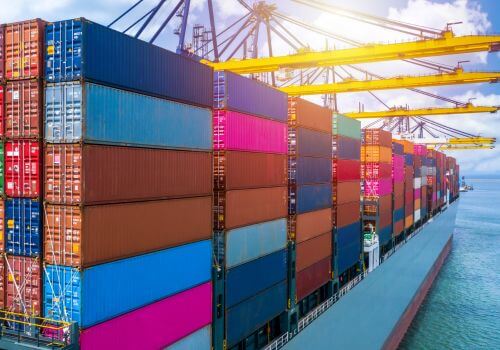The supply chain in logistics is the entire process that gets products from the raw materials stage to the final customer. It involves many steps and different people working together to make sure products are made, stored, transported, and delivered efficiently.
The key parts of the supply chain
Suppliers
Suppliers are the starting point of the supply chain. They provide the raw materials or components needed to make products. For example, a steel supplier provides the steel needed to make cars. There are two types of suppliers: those that provide raw materials, like steel or cotton, and those that provide parts, like microchips for computers or engines for cars.
Manufacturers
Manufacturers take the raw materials and components from suppliers and turn them into finished products. This involves designing, assembling, testing, and ensuring the products meet quality standards. Manufacturers use different methods, like mass production or custom manufacturing, to make products efficiently.
Warehouses
Warehouses are storage facilities where raw materials, partially finished goods, and finished products are kept. They help manage inventory, ensuring there is enough stock to meet demand without having too much extra that would take up space and money. Different types of warehouses include distribution centers, fulfillment centers, and cross-docking facilities.
Distribution centers
Distribution centers receive products from manufacturers and then send them out to retailers or directly to customers. The focus on sorting, packaging, and dispatching goods quickly and accurately.
Retailers
Retailers are the places where customers buy finished products. They can be physical stores, online shops, or a combination of both. Retailers use strategies like just-in-time stocking, where products are ordered as needed, to keep their inventory levels efficient.
Customers
Customers are the end-users who buy and use the finished products. Their purchasing habits influence how products are made, stored, and delivered. Customer feedback helps companies improve their products and processes.
The important processes in the supply chain
Procurement
Procurement is the process of sourcing and buying the raw materials and components needed to make products. It involves finding suppliers, negotiating contracts, and ensuring timely delivery.
Production planning
Production planning is about scheduling and managing the manufacturing process to make sure products are made efficiently and meet demand. Techniques like Material Requirements Planning (MRP) help balance demand with production capacity.
Inventory management
Inventory management involves keeping track of stock levels to ensure there’s enough to meet demand but not so much that it becomes wasteful. Strategies include Just-In-Time (JIT) inventory and safety stock levels to optimize inventory.
Order fulfillment
Order fulfillment is the process of receiving, processing, and delivering customer orders. It includes order entry, picking and packing, shipping, and handling returns. Different fulfillment models, like direct shipping and third-party logistics (3PL), help make this process efficient.
Transportation and logistics
Transportation and logistics involve moving goods from suppliers to manufacturers, between facilities, and to customers. It requires planning the best routes, choosing the right carriers, and managing freight. Different modes of transport like road, rail, air, and sea, are chosen based on cost and speed.
Demand forecasting
Demand forecasting predicts customer demand to plan procurement, production, and inventory. Accurate forecasting helps align supply with market needs and avoid overproduction or stockouts.
Supply chain coordination and integration
Supply chain coordination ensures that everyone involved works together smoothly. Integration involves aligning goals, sharing information, and planning collaboratively to enhance efficiency.
Technologies in the supply chain
Enterprise Resource Planning (ERP)
ERP systems integrate different business processes across the supply chain, providing real-time data and analytics to improve decision-making.
Warehouse Management Systems (WMS)
WMS software optimizes warehouse operations, including inventory management, picking, packing, and shipping processes.
Transportation Management Systems (tms0
TMS solutions plan and optimize transportation, focusing on route planning, carrier selection, and freight management.
RFID and Barcoding
RFID and barcoding track and manage inventory throughout the supply chain, improving accuracy and efficiency with real-time visibility.
Internet of Things (IoT)
IoT devices collect and exchange data to enhance visibility, monitoring, and automation in the supply chain, enabling real-time tracking and predictive maintenance.
Aritificial Intelligence (AI) and Machine learning (ML)
AI and ML technologies help with advanced analytics, demand forecasting, predictive maintenance, and supply chain optimization by identifying patterns and optimizing routes.






